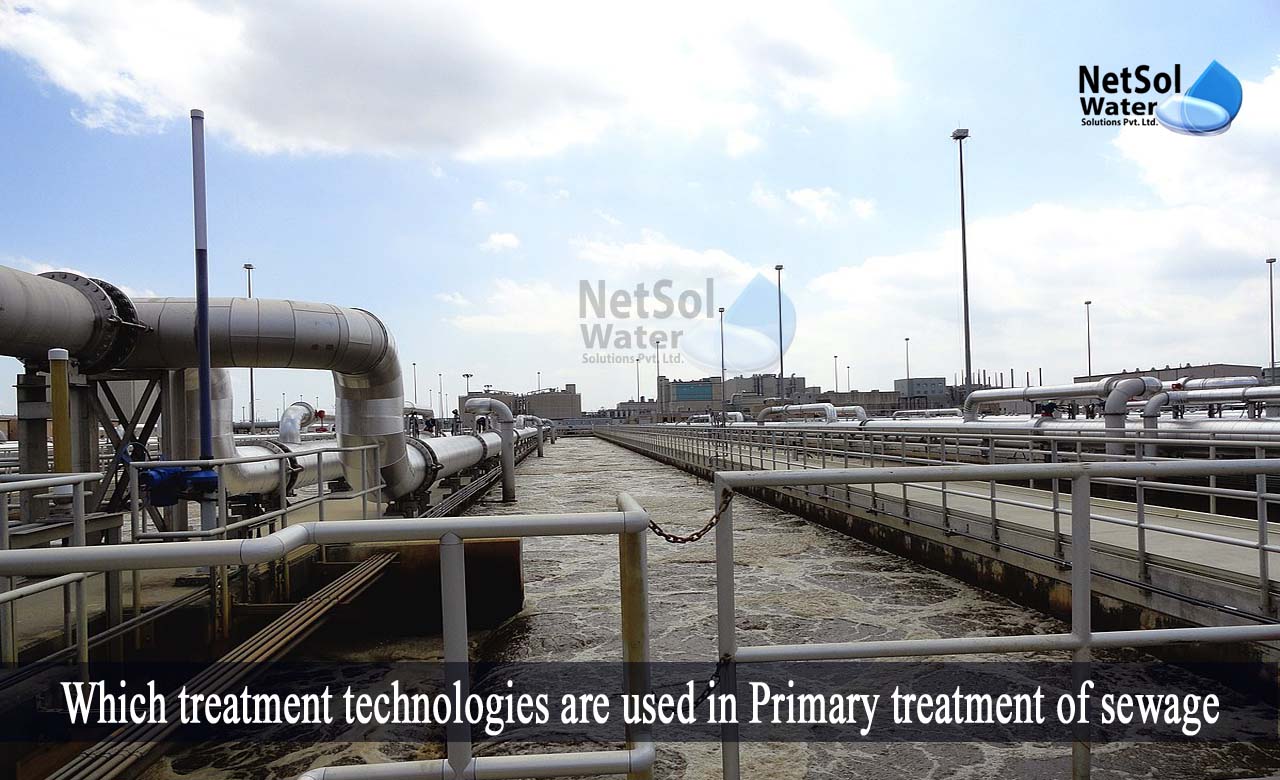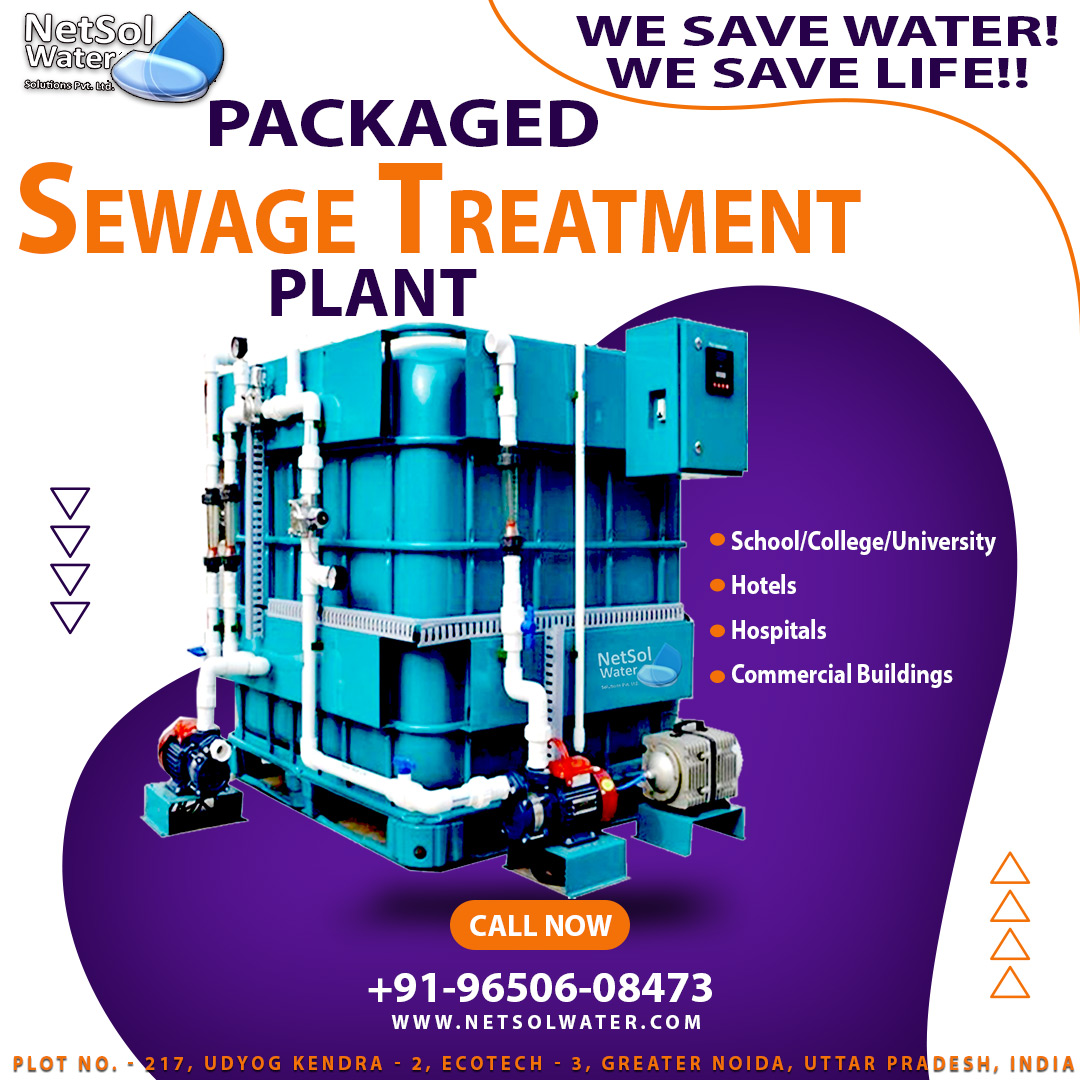Primary Treatment of sewage
The first step in the sewage treatment process is primary treatment, which removes suspended solids (TSS), oil and grease, colour, and odour. The screens, grit chamber, flow equalization tank, and clarifier are critical components in this process.
Wastewater/Sewage is run through a screen in basic treatment to remove any big objects, suspended in the water. If these sediments are not removed prior to treatment, they might become stuck in downstream equipment, causing damage and inefficiency.
The water is then passed through a grit chamber, where the grit is removed. Sand, gravel, eggshells, bone pieces, seeds, and other things are examples of grit. To eliminate large deposits in aeration tanks, digesters, channels, and conduits, grit removal is required. It offers the advantage of preventing wear and tear on mechanical equipment.
Which treatment technologies are used in Primary treatment of sewage?
· Screening
These are comprised of longand narrow metal bars, which are closely separated. Screens prevent floating wastes, like wood, and rags, and other bulky things, from clogging pipes or pumps.
Modern sewage treatment plants clean the screens mechanically, and the debris is disposed of promptly by burial on the plant grounds. The waste that goes past the screens can be ground and shred using a comminutor. Later on, the sedimentation or the flotation operations, remove these shredded particles.
· Equalization
It is applicable for wastewaters with varying characteristics at different time intervals, and where uniform treatment is required. Each unit volume of waste is thoroughly mixed with other unit volumes of waste, to produce homogeneous and equalized effluent. It provides better mixing of different unit volumes of effluents.
· Neutralization
It is suitable for strongly acidic and alkaline effluents. Acidic effluents can be neutralized with lime, lime slurry, or caustic soda. Alkaline waste can be neutralized with acids.
· Coagulation & Flocculation
In chemistry, flocculation is the process by which colloidal particles come out of suspension to settle as floc or flake, either spontaneously or as a result of the addition of a clarifying agent.
Prior to flocculation, colloids are just suspended in a stable dispersion, where the internal phase (solid) is dispersed throughout the external phase (fluid) through mechanical agitation, and are not truly dissolved in solution, as opposed to precipitation.
Coagulation and flocculation are key processes in sewage treatment, with coagulation aiming to destabilize and aggregate particles via chemical interactions, between the coagulant and colloids, and flocculation aiming to sediment the destabilized particles via flocculation.
· Grit Chambers
Grit chambers are long, narrow tanks meant to restrict the flow of water so that particles, like sand, coffee grinds, and eggshells settle out. Pumps and other plant equipment suffer from increased wear and tear, as a result of grit.
· Sedimentation
Sedimentation tanks remove suspended solids from sewage that have passed through screens and grit chambers. These tanks, also known as primary clarifiers, give approximately two hours of detention time for gravity settling to occur.
These sediments settle to the bottom as sewage runs through them. Mechanical scrapers carry the settled solids, known as raw or primary sludge, along the tank bottom.
The sludge is collected in the hopper and is pumped out for disposal later on. Surface-skimming mechanical devices remove oil and other floating materials.
· Gravitational settling and floating material separation of suspended particles
It clarifies collected rainwater by removing solids (sand or dust), and by removing inert components (sand or comparable particles).
It also clarifies wastewater by separating reaction material (emulsified metal compounds, polymers and their monomers). After a flocculation procedure, it separates heavy metals or other dissolved components.
Additionally, it removes suspended solids in the primary clarifier of a biological STP. It also removes biological sludge in the secondary clarifier.
How can we assist?
Check out our sewage treatment services on our website. If you require additional information on wastewater or sewage treatment, our experts will gladly explain how we treat and purify sewage to ensure its safety.
Contact Netsol Water today to obtain answers to all your primary wastewater treatment inquiries. You can approach us via phone at +91 9650608473 or by email at enquiry@netsolwater.com.




